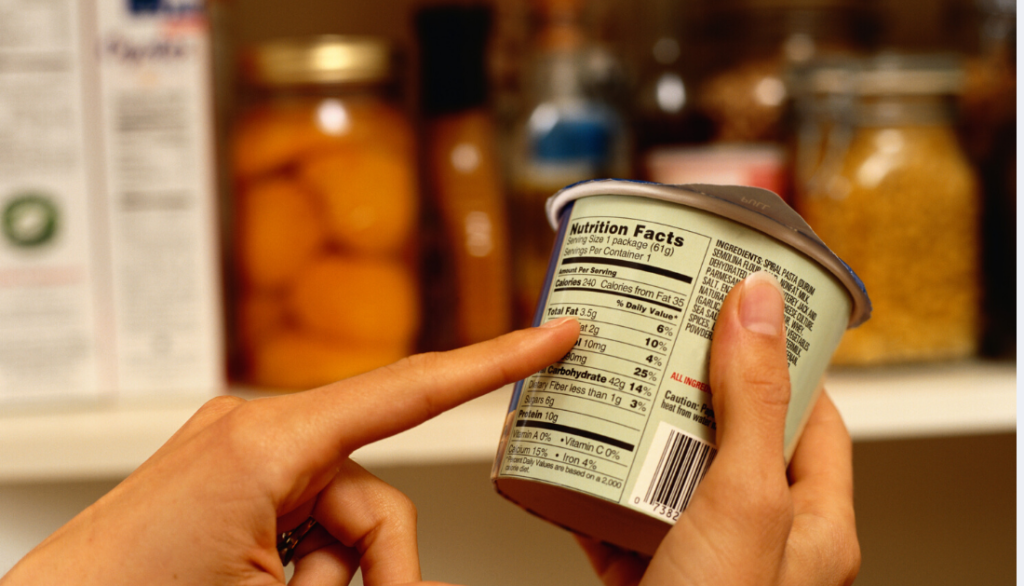FDA mODERNIZATION
Consumer Agenda for FDA Modernization
Overview
The importance of the Food and Drug Administration’s mission cannot be overstated. The consumer packaged goods industry depends on FDA to perform its regulatory role effectively, efficiently and transparently. Consumers rely on FDA to ensure high quality and safe products enter the market. As we look to the future of our industry, modernizing and reforming FDA is critical to building and maintaining consumer choice and trust.
Consumer Brands Association plays a critical role in assuring our industry companies can innovate, grow and thrive. To accomplish this, we are calling on FDA to develop and implement a structured, prioritized regulatory agenda for its foods program, utilizing a transparent process that allows for stakeholder input and includes a public process for rulemaking and issuance of guidance. Further, we are recommending a series of high value, product-related policies that embrace technology and reframe FDA’s food program operations. The major categories for modernization are detailed in the following plan.
Enable Pathways for Innovation
Ensure more timely agency decisions on the safety and labeling of novel foods and food ingredients to help new products get to the market at the pace of the consumer.

- Commit to expedited review timelines to facilitate industry innovation
- Stress timeliness of government decisions regarding the safety and labeling of novel foods and food ingredients.
- The consumer palate changes quickly in comparison to FDA’s timeline for reviewing and making decisions on industry submissions and the subsequent time needed for product development and scale up.
- Embrace the use of technology and new and novel risk prioritization and assessment models to streamline the review of industry submissions (food additive petitions, food contact notifications and letters of no objection).
- Advocate for funding to update technology infrastructure to facilitate the use of innovative processes, including the use of machine learning and AI
Inspection Modernization
Move from one-size-fits-all inspections to a tailored, risk-based inspection model and facilitate an integrated federal-state approach to regulatory oversight to assure consumers have access to safe food.

- Move from one-size-fits-all inspections to tailored, risk-based inspections.
- Inspections focused on industry compliance with prevention-oriented standards established under FSMA.
- Integrated (not duplicative) federal-state regulatory oversight.
- Inspection models aligned with current industry practices, e.g., two-tiered inspection model.
- Inspection programs that incorporate the use of remote regulatory activities.
- Recognition of 3rd party audit results to prioritize and scope on-site inspections.
Recall Modernization
In partnership with Alliance to STOP Foodborne Illness, harmonize government recall policies and processes and modernize communications and modes of delivery of those communications to assure consumers do not get sick from recalled food products.

- Harmonize federal government recall policies and processes, including recall classifications and public/consumer communications.
- Embrace secure data sharing technology and implement streamlined approaches for industry to provide recall information to government officials.
- Establish policies and procedures that include the use of modern modes of message delivery for recall communications to consumers, moving from complete reliance on press releases and expanding to text, email and social media.
- Provide thought leadership on policies that cover recalled products sold via e-commerce
Nutrition, Consumer Transparency and Education
Proposed regulations should enhance product transparency and help consumers quickly and easily identify foods and beverages that can build healthy eating patterns as defined by the Dietary Guidelines for Americans.

- Shape conversations and actions related to Front of Pack Nutrition Labeling
- Lead industry efforts to determine how the proposed definition of health and an experimental symbol for healthy could work with SmartLabel and Facts Up Front.
- Expand and promote SmartLabel for providing product information to consumers
- Promote use of SmartLabel on e-commerce platforms to provide consumers with product information at the point of sale.
- Consider maintaining and enhancing the labeling flexibilities provided during COVID, noting that supply chain constraints are expected to continue for two to three years.
- Design principles for product labeling on digital platforms/products sold via e-commerce
- Envision and describe art of the possible for product labels and labeling of the future, while working alongside existing voluntary industry efforts.
Providing transparent, comprehensive information for consumers to make informed decisions about the food and beverage products they choose is a core tenet of the makers of America’s trusted household brands. This includes implementing industry-led initiatives and technologies to promote product transparency. Read The Makers of America’s Food & Beverage Brands’ Commitment to Consumer Transparency on Nutrition here.
Rule and Guidance Development
Lead efforts to formalize private-public models to expeditiously create and post in the public domain industry best practice documents, as was done during the pandemic, to assure consumers have access to products they use in their homes every day.

- Collaborate with industry to share best practices and expedite production, following the example of what was done during pandemic response.
- During the COVID-19 crisis, Consumer Brands developed documents that were fit for use, timely and served to help numerous individual facilities and establishments navigate an ever-changing situation and keep products on the shelves.
- Pilot collaborative model to develop root cause analysis best practice document
Traceability
Partner with government to develop implementation plans for the food traceability rule and other end-to-end product visibility initiatives to provide consumers with the information they demand on CPG products and assist with quickly removing products from the marketplace, when needed.

- Anticipate final traceability rule in November 2022 and other end-to-end product visibility initiatives; partner with government to develop implementation strategies that are practical for industry.
- Consider the new traceability requirements for specific foods in the context of the broader need for enhancing the nimbleness and visibility of supply chains and consumer demand for more product information to make informed purchasing decisions.
- Determine the regulators’ responsibility versus where industry should take initiative.
Chemicals Management
Develop a transparent regulatory agenda for chemicals in packaging and products to provide certainty to industry and consumers.

- Advocate for an interagency process at the national level that fosters common federal regulatory and scientific priorities, the development of research and data collection and sharing initiatives, and the coordination of administration-wide positions and timelines on proposed regulations.
- Advocate for a robust process of gathering sufficient data and information to determine the feasibility of potential chemical action levels and the necessary timeframes and practical considerations for achieving them.
- Ensure agencies communicate risk-benefit considerations so that consumers can make informed decisions that account for both the potential risks of specific chemicals and the benefits of the products that they might appear in.
Packaging Sustainability Commitments
Position FDA as a leader and subject matter expert in facilitating food packaging innovation to assist industry in meeting state-mandates for recycled content and packaging material bans, supporting environmental commitments and consumer demand for more sustainable packaging.

- Raise FDA awareness of state activities regarding food packaging; seek FDA intervention when states are proposing action that is duplicative or in conflict with the agency’s responsibilities or to ban chemicals in food packaging and food packaging materials that FDA has approved.
- Continue to push the agency for updated recycling guidance.
- Streamline review processes for letters of no objection and food contact notifications to support and drive packaging innovation.
IT Infrastructure Modernization
Enable FDA to collate and mine big data to inform policy, make decisions and more responsibly use resources provided through Congress to ultimately assure consumers have access to a wide variety of safe foods.

- Allow FDA access to data that supports better decision-making and policy and judicious use of limited resources.
- Advocate for funding for IT enhancements
- Develop models to support private-public data sharing/data trusts
A decade ago, the expectation would have been modernizing FDA to move at the speed of business. Today, it is essential that FDA move at the speed of the consumer, meeting their rapidly changing preferences and demands. The potential, and most of the pieces, are within FDA’s reach and it is time to implement significant and lasting change for American consumers.
Read More

Blog
How CPG’s Transparency Tools Align with FDA Priorities

Blog
How New Research Spotlights the Importance of Facts up Front

Press Release
New Research Shows Strong Consumer Preference for the Facts up Front Label on Food and Beverage Products

